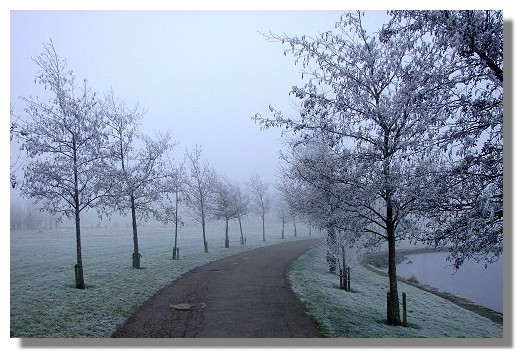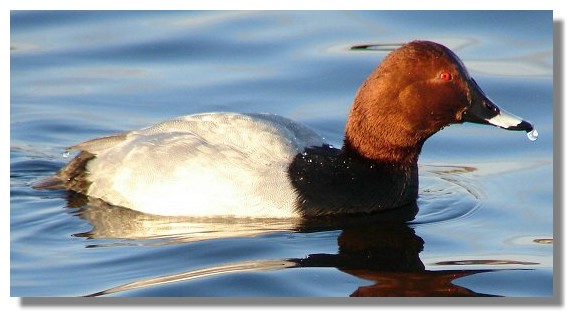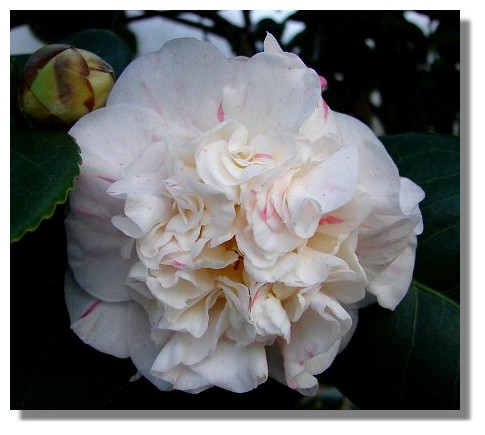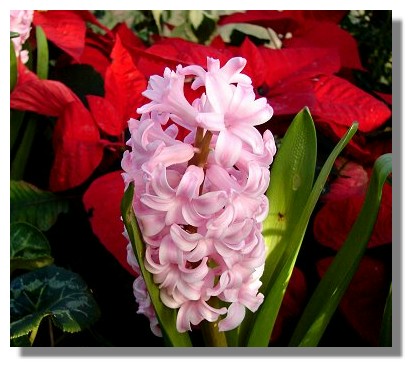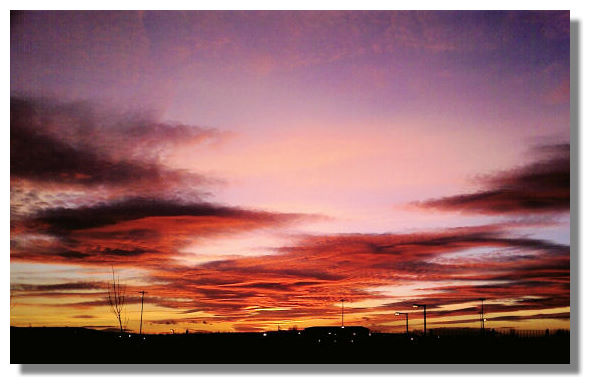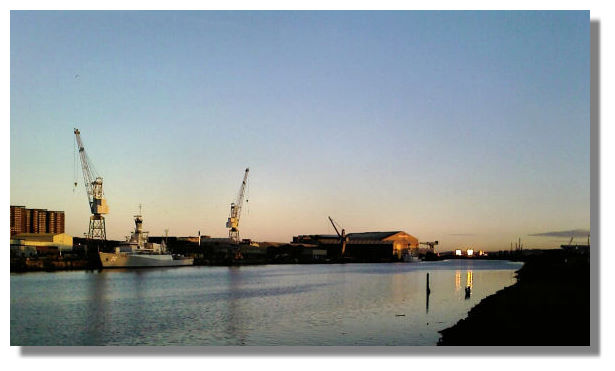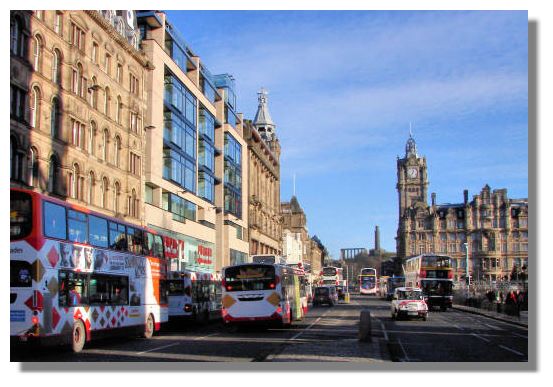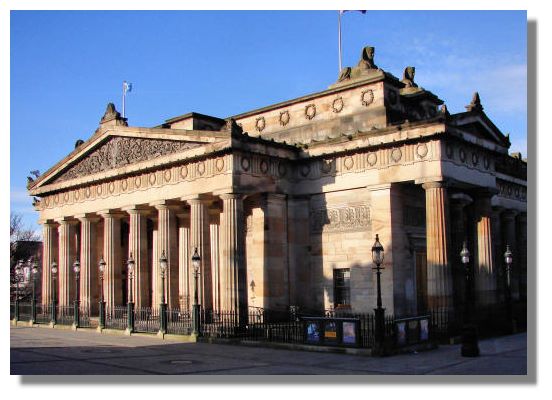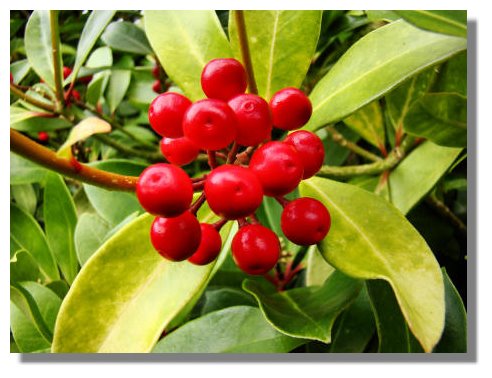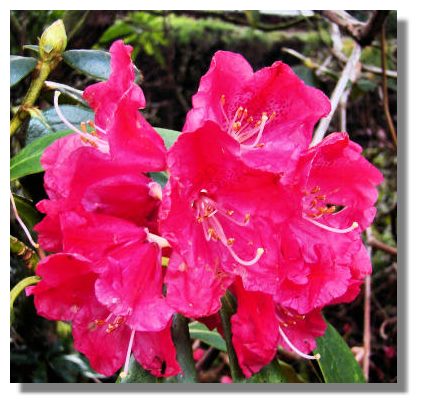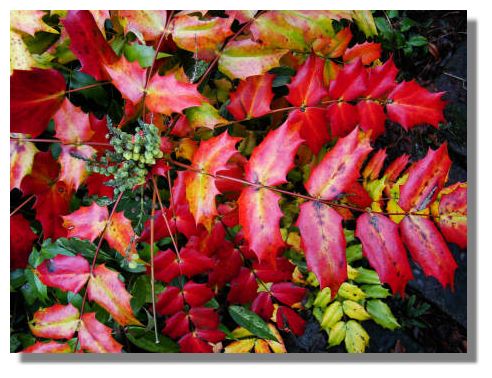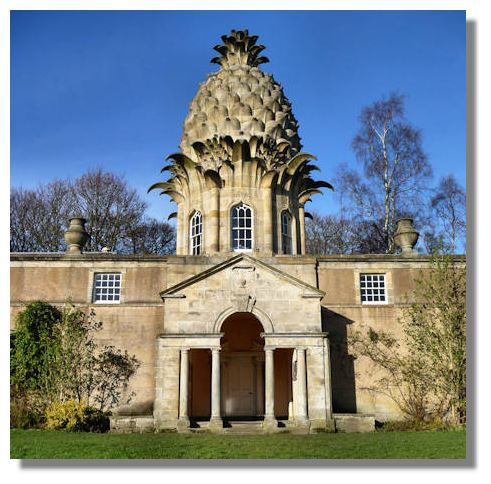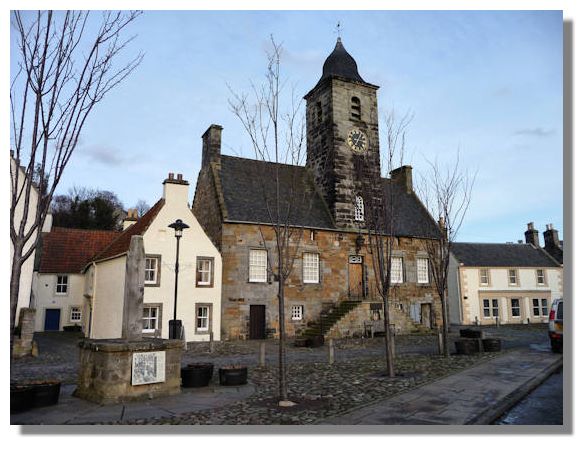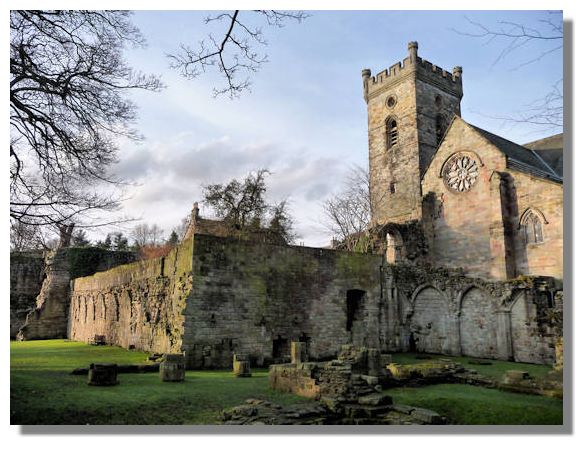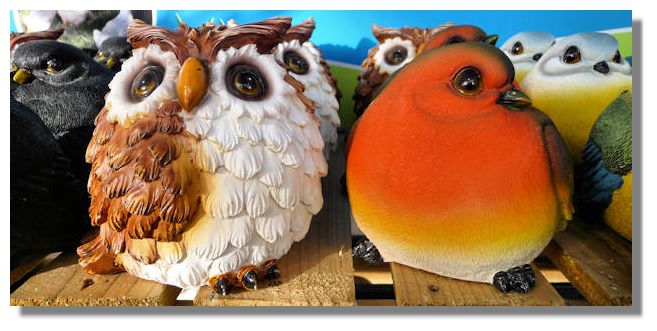This chilly-looking picture was taken at Drumpellier Country Park, where much of the water in the lochs was frozen and the trees were still white with frost even in the middle of the afternoon.
The sun brings up the lovely colours of this Pochard. Pochards are usually shy birds and paddle away as soon as humans approach - particularly, it seems, humans with cameras... But this bold little fellow was keen to get a share of the bread being thrown to the other ducks and swans. Being a diver, he was able to avoid the diving seagulls trying to snatch any bread from his mouth, by immediately diving under the water!
No, the weather didn't suddenly get warmer - on cold days the sensible thing to do is to stay indoors. In this case, "indoors" is the greenhouse at the Botanic Gardens at Kelvingrove in Glasgow. Although I have seen one or two foolhardy Camellias in the open, it will be a month or two before they are in full bloom in central Scotland.
This Hyacinth was also growing indoors at the Botanic Gardens at Kelvingrove in Glasgow.
This sunset picture was taken from a supermarket car park - hope that information doesn't spoil your enjoyment of the dramatic colours! The location was near the Glasgow Fort shopping mall in Easterhouse, Glasgow.
This shot of the river Clyde, looking up river from the BAE Systems shipyard at Scotstoun, was taken in the late afternoon - the white rectangles in the distance are the windows of an apartment block reflecting the setting sun.
This panoramic view of some of the shops on Princes Street, Edinburgh, was taken from the parkland below the castle. Even though it was only around 1pm, the castle rock had put Princes Street Gardens in deep shade.
They may have banned private cars from Princes Street, but that doesn't stop the local buses from creating their own traffic jams as they compete for customers. That's the clock tower of the Balmoral Hotel on the right.
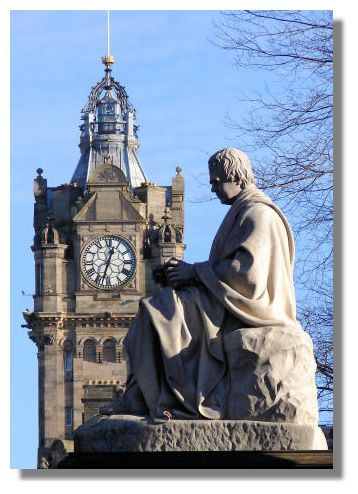
This statue in white Carrara marble of Sir Walter Scott sits underneath the romantic, heavily carved, 200 feet high monument to the writer in Princes Street Gardens. The design was the winner of an architectural competition and the sculpture was completed in 1846. George Meikle Kemp, the self-taught architect who designed the monument never saw his ideas come to fruition - he tripped in a fog into the Union Canal in 1844 and drowned.
Looking very like a Greek temple, the Royal Scottish Academy was designed by Sir William Playfair. The building is one of a number which contribute to Edinburgh being called the "Athens of the North."
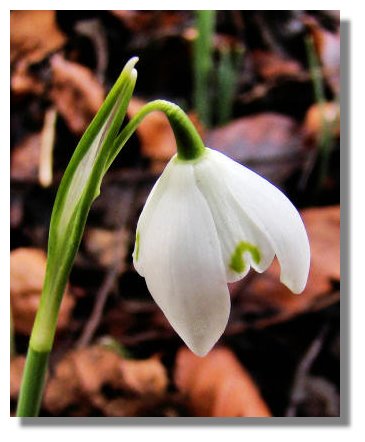
A welcome sign of impending spring is the Snowdrop (Galanthus). It is one of the most widely grown bulbs in many countries, including Scotland. Although this photo is of a single flower, they spread well and often cover a wide area, particularly on grassy banks and in woodlands. This one was growing in Finlaystone Country Estate in Inverclyde.
We have here the berries of one of the varieties of Skimmia, grown for its bright red berries which last through the winter.
It's always a surprise to come across a winter-flowering Rhododendron - even when I've seen this one over many years. Rhododendrons flower more typically in the spring and early summer, when there is a profusion of flowering shrubs of all sorts of colours. The few winter-flowering varieties are not quite as showy, but at this time of year are still eye-catching.
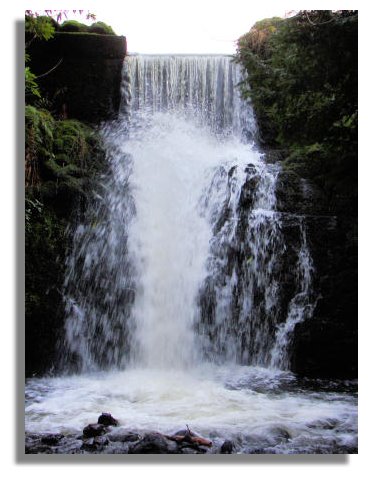
Waterfalls like this one in Finlaystone Country Estate are particularly impressive after a lot of winter rain.
These Mahonia leaves look more typical of autumn than winter - and just to add to the confusion of seasons, it has some flower spikes just about to come into bloom.
Described as the "most bizarre building in Scotland" this is a summer house built in 1761 with a first floor of cantilevered masonry in the shape of a realistic, prickly pineapple which is 45 feet high. It was built at a time when pineapples were relatively unknown in Scotland. Four chimneys are disguised as stone vases on top of an adjoining wall, because the summer house was heated by a furnace which circulated hot air through cavities in the wall. There are 16 acres of gardens with an orchard and the property has been restored by the National Trust for Scotland - and can be rented as a holiday home!
Dunmore is just off the A905 road between Falkirk and Stirling and about a mile away, on the same road, is the ancient village of Airth. The present parish church, seen here, dates from the 1820's and has a large graveyard which lies on a slope. Behind the church is the River Forth and beyond that the Ochill Hills, with a light covering of snow. The ruins of a much older church (dating from the 12th century) can be found beside Airth Castle.
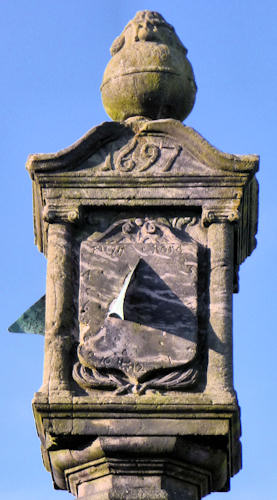
The market cross at Airth was erected by a Charles Elphinston in 1697. His initials and coat of arms and those of his mother and father with their arms quartered are on two sides of the cross. Unusually for a market cross, the other two sides of the cross are sun dials and one of them (seen here) has the date 1697. Quite apart from the inaccuracy of sun-dials, you would need very good eyesight to read the numbers at the top of the tall cross from the street below. Charles Elphinston was killed in a duel with a relative, Captain William Bruce of Auchenbowie at Torwood. These days, there is an Elphinstone Inn, adjacent to the market cross.
On the other side of the river Forth from Airth, and slightly further downstream in Fife, is the ancient town of Culross (pronounced "Coo-ross"), an almost perfect example of an ancient Scottish burgh of the 17th and 18th centuries. Many of the houses are of that period and the crows' feet gables, pantile roofs and narrow cobbled streets are typical of that time. A number of the buildings are now owned by the National Trust for Scotland including this fine Town House or "Tolbooth" dating from 1626. It was formerly used as a courthouse and prison.
The "Palace" in Culross (illustrated here) is not associated with royalty but was built for Sir George Bruce, a wealthy merchant and industrialist, in the 17th century. The Palace is particularly attractive both because of the painted wooden ceilings and as the National Trust have filled it with furniture of the 17th and 18th centuries. The building facing the camera was originally an unpretentious late 16th-century dwelling house. George Bruce's initials are carved above one of the windows with the date 1597. A later building, dated 1611, has the initials "SGB" as by that time he was Sir George Bruce! He built the first coal mine in the world to extend under the sea at Culross.
On the outskirts of Culross is an abbey which was founded in 1217 by Malcolm I, Mormaer or Earl of Fife. Culross may have been chosen to establish an abbey because this was reputed to be the birth place of Saint Mungo (also known as Kentigern), the patron saint of Glasgow. It is also possible that the abbey was built over an earlier Pictish church, founded by Saint Serf in the 6th century. In 1633 the east choir of the abbey was taken over for use as a parish church, while the adjoining buildings (seen in the foreground) fell into decay.
This amusing picture of models of a stylised owl and robin was taken in Toward Garden Centre, on the way to Airth and Culross. The expressions on their faces (and that of a fierce-looking blackbird behind) certainly made the customers smile!
If you want to look back at other editions of these photos of Scotland week by week, there is an Index Page

Where else would you like to go in Scotland?


